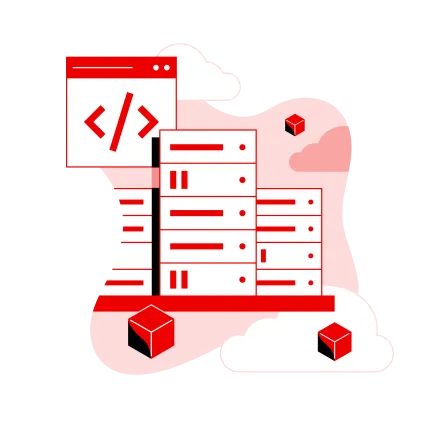Red Hat Enterprise Linux (RHEL) 8.4 is generally available to customers as of May 19, 2021. Delivered as part of the predictable, six-month cadence of RHEL releases 8.4 brings important features for hybrid cloud, edge deployments and enhancements for operators, developers and organizations standardized on RHEL.
RHEL at the Edge
With RHEL 8.3 we announced a deployment option for RHEL to help solve challenges common to edge computing environments. With 8.4, we have built on that work to improve the user experience around the edge computing capabilities in RHEL.
RHEL 8.4 simplifies updates, provides additional options for installing to disconnected systems (as many edge systems are) and adds the ability to use OSTree repositories with OCI container images. Read about the improvements in Ben Breard's post on new edge features for 8.4.
 Do you know about Red Hat Enterprise Linux's latest features and updates?
Do you know about Red Hat Enterprise Linux's latest features and updates?
 Do you know about Red Hat Enterprise Linux's latest features and updates?
Do you know about Red Hat Enterprise Linux's latest features and updates?
Red Hat Insights
A Red Hat Enterprise Linux subscription is so much more than the bits that make up a RHEL release. It's the ecosystem that surrounds RHEL, the services like Red Hat Insights, the extensive documentation, the certifications and much more.
We were pleased to announce in late April that we've expanded Insights to help provide a holistic view across your IT environments and into Red Hat OpenShift and Red Hat Ansible Automation Platform.
Hybrid cloud your way
One of the things we've worked on in conjunction with the 8.4 release is simplifying our Cloud Access program, making it easier to consume content when deploying cloud-based systems and manage them using the Insights ecosystem.
Read all about our improvements and new features around doing hybrid cloud your way with RHEL 8.4.
Much more in 8.4
RHEL 8.4 comes with the Container Tools 3.0 AppStream, which contains newer versions of Podman, Buildah, Skopeo and runc.
Podman now has support in RHEL for auto-updating container images, which allows Podman to poll to see if containers have been updated and pull new images and use systemd to restart them if there is a new image.
This release also sees the addition of the Red Hat Universal Base Image (UBI) micro image. This is the smallest UBI offering that omits package management from the image itself, but can rely on a package manager on the underlying RHEL host to install packages.
Naturally, we have introduced new AppStreams for our customers with 8.4, including Python 3.9, Redis 6, PostgreSQL 13, MariaDB 10.5 as well as GCC 10, LLVM 11, Rust 1.49 and Go 1.15.7.
Intel Tiger Lake GPUs are now supported in RHEL 8.4, which includes Intel UHD graphics and Intel Xe integrated GPUs.
RHEL 8.4 introduces two new system roles. First, a new Reliable Event Logging Protocol (RELP) system role for forwarding or receiving rsyslog log messages with RELP. We also have introduced an SSH Client system role to help configure RHEL SSH in a consistent and stable manner for SSH servers and clients.
Many of these enhancements and features (and more) will be covered in more detail in upcoming posts on the Red Hat Blog.
Get RHEL 8.4 today
RHEL 8.4 is available today to all customers with active RHEL subscriptions. To download RHEL 8.4 ISO images, KVM images, supplementary content and more, visit the download page on the Red Hat Customer Portal. (A login is required to access RHEL downloads and support.)
The release notes for 8.4 are also available and you can keep up with the latest information about RHEL 8.4 on the RHEL 8.4 information page and the RHEL Blog.
Über den Autor
Joe Brockmeier is the editorial director of the Red Hat Blog. He also acts as Vice President of Marketing & Publicity for the Apache Software Foundation.
Brockmeier joined Red Hat in 2013 as part of the Open Source and Standards (OSAS) group, now the Open Source Program Office (OSPO). Prior to Red Hat, Brockmeier worked for Citrix on the Apache OpenStack project, and was the first OpenSUSE community manager for Novell between 2008-2010.
He also has an extensive history in the tech press and publishing, having been editor-in-chief of Linux Magazine, editorial director of Linux.com, and a contributor to LWN.net, ZDNet, UnixReview.com, and many others.
Mehr davon
Nach Thema durchsuchen
Automatisierung
Das Neueste zum Thema IT-Automatisierung für Technologien, Teams und Umgebungen
Künstliche Intelligenz
Erfahren Sie das Neueste von den Plattformen, die es Kunden ermöglichen, KI-Workloads beliebig auszuführen
Open Hybrid Cloud
Erfahren Sie, wie wir eine flexiblere Zukunft mit Hybrid Clouds schaffen.
Sicherheit
Erfahren Sie, wie wir Risiken in verschiedenen Umgebungen und Technologien reduzieren
Edge Computing
Erfahren Sie das Neueste von den Plattformen, die die Operations am Edge vereinfachen
Infrastruktur
Erfahren Sie das Neueste von der weltweit führenden Linux-Plattform für Unternehmen
Anwendungen
Entdecken Sie unsere Lösungen für komplexe Herausforderungen bei Anwendungen
Original Shows
Interessantes von den Experten, die die Technologien in Unternehmen mitgestalten
Produkte
- Red Hat Enterprise Linux
- Red Hat OpenShift
- Red Hat Ansible Automation Platform
- Cloud-Services
- Alle Produkte anzeigen
Tools
- Training & Zertifizierung
- Eigenes Konto
- Kundensupport
- Für Entwickler
- Partner finden
- Red Hat Ecosystem Catalog
- Mehrwert von Red Hat berechnen
- Dokumentation
Testen, kaufen und verkaufen
Kommunizieren
Über Red Hat
Als weltweit größter Anbieter von Open-Source-Software-Lösungen für Unternehmen stellen wir Linux-, Cloud-, Container- und Kubernetes-Technologien bereit. Wir bieten robuste Lösungen, die es Unternehmen erleichtern, plattform- und umgebungsübergreifend zu arbeiten – vom Rechenzentrum bis zum Netzwerkrand.
Wählen Sie eine Sprache
Red Hat legal and privacy links
- Über Red Hat
- Jobs bei Red Hat
- Veranstaltungen
- Standorte
- Red Hat kontaktieren
- Red Hat Blog
- Diversität, Gleichberechtigung und Inklusion
- Cool Stuff Store
- Red Hat Summit

